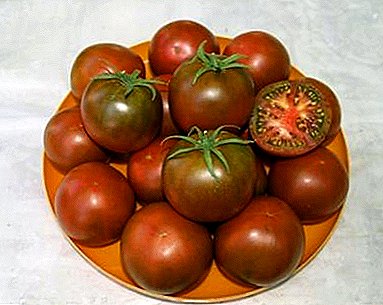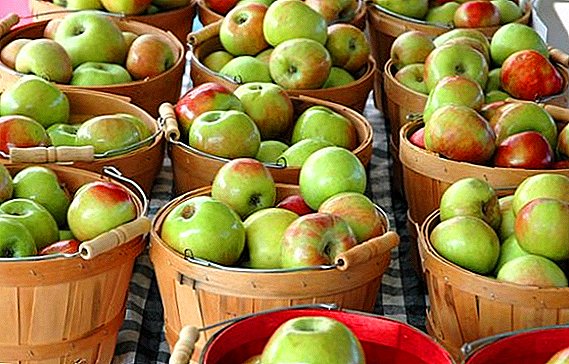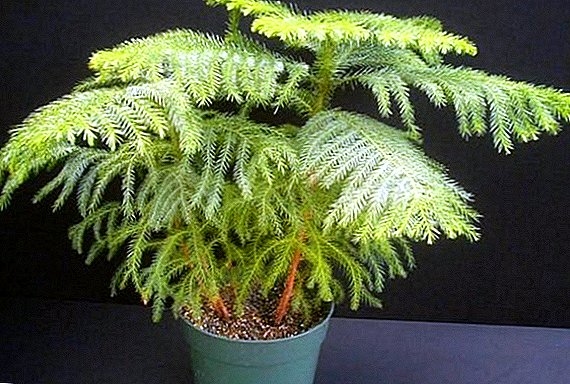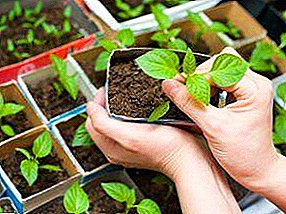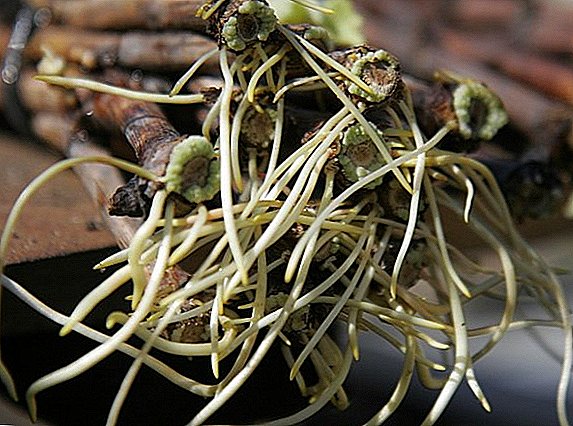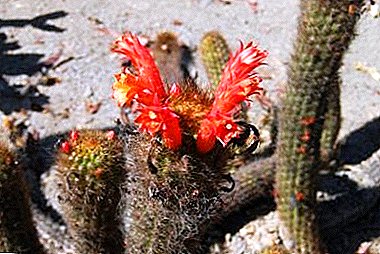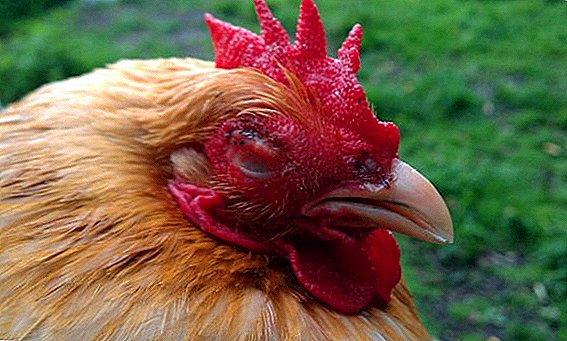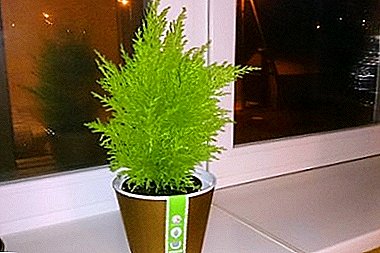
Cypress is a favorite of landscape designers and gardeners. is he combines two advantages - aesthetic beauty and utility.
Before you grow this plant, read the recommendations for caring for him.
Let's talk about cypress Gold Wilma: care at home, problems in growing, beneficial and harmful properties.
Home care
This representative of evergreens and conifers best of all the others takes root in apartment conditions. But inattention to himself he will not forgive you!
How to care after purchase?
Cypress Goldcrest Wilma - very sensitive to external effects and lack of moisture. In no case do not loosen the soil, so as not to damage the roots.
Provide the plant with moderate air temperature in the rest of the seasons, and in the winter - cool, degrees 5.
From late spring to early fall better to put a pot of cypress in the fresh air, priteniv and protected from drafts. The light must be bright and diffused. Do not destroy it with the sultry air from the battery or heater during the rest period.
Watering features
 Water the plant on time. Especially abundant - from May to August inclusive. Him It is strictly forbidden to overdry!
Water the plant on time. Especially abundant - from May to August inclusive. Him It is strictly forbidden to overdry!
The reaction will come only after some time - about a month. The cypress will turn pale, its twigs will be dry and lifeless. But excess water is also harmful.
In winter water several times a month at a temperature of 8-9 degrees, and once a week - at 10-12.
Feel free to spray more often, you can even daily.
Bloom
At home cypress Goldcrest Wilma almost no chance to bloom. This is due to the fact that the sale is usually the same-sex male plants.
Cones don't expect it from him either. Cypress is inherently dioecious in nature - for the formation of cones it is necessary to have both sexes of the plant - male and female.
Crown formation
By nature, Goldcrest Wilma is endowed with harmony and grace, the correctness of form. First of all it concerns the crown. It can occasionally be cut and corrected. Thorough circumcision advised to produce in spring, before the start of active juicing.
Forming a crown and cutting it is useful, to give the plant a well-groomed appearance and enhance the growth of young shoots. If you prefer classic forms, one procedure per year is enough. The tree will grow upwards, the growth of side shoots will remain slow, and the crown will be formed naturally.
If you wish, you can add an accent to the cypress, consonant with the overall interior of the home, your preferences. Fragile twigs are easy to cut and "sculpt" the crown is not difficult. It is very easy to arrange the branches in the form of a cube, a ball, a pyramid, spirals for the sake of your imagination.
We prepare the soil and soil
Options:
- pH for soil for cultivation should be in the range of 5.5-6.5;
- the most favorable weak acidic environment;
- the soil is selected in the ratio: one part of the turf soil, two - leaf, one - peat and one - sand;
- We prepare high-quality drainage with an obligatory admixture of expanded clay, make several holes at the bottom of the pot.
Planting and transplanting
 If you want to plant a young sprout in a pot, do it to achieve his monthly "age" least.
If you want to plant a young sprout in a pot, do it to achieve his monthly "age" least.
Do not plunge the root neck deep into the ground.so that the plant does not die. Root neck figuratively called Mezhuyev, which distinguishes between the trunk on the aboveground and underground.
Transplant with absolute replacement of land is done only in case of emergency. Usually made transshipment with the replacement of soil, which itself is separated from the root system. The best time for a transplant is spring, April or May. The frequency of the procedure is once a year.
Cypress painful injury to the roots. Use extreme caution.
Breeding
Cypress Goldcrest Wilma can multiply with top and semi-aged cuttings. Get them by trimming the tree:
- stop the choice on the segments that have a "heel";
- remove the bottom leaflets;
- put the "bouquet" in the root solution for 24 hours;
- wash thoroughly;
- sprinkle the cut sites with crushed coal;
- We plant cuttings in the soil mixture, deepening by one third;
- abundantly water the soil;
- Cover each stem with a three-liter clear glass jar;
- several times a week we raise the jar and give the cuttings the opportunity to breathe.
After two months, the young shoots take root.
Growing cypress
Spring - a favorable period for propagation by seeds, and the end of spring and summer - stiffened cuttings.
If you want to propagate a tree with seeds, choose an unripe cone - its inner part should be green, but slightly open. The number of seeds in it is close to thirty.
Plant all seeds in the ground, only a quarter of them will sprout. During the period of seed spitting (14-20 days), the soil needs constant moisture, and when sprouts appear, an indicator to start watering is the drying of the surface soil layer.
Place the seedlings in a bright place.
Temperature
 When cultivating Wilma's Goldcrest seasonality principle: he needs warmth in summer and coolness in winter.
When cultivating Wilma's Goldcrest seasonality principle: he needs warmth in summer and coolness in winter.
Optimal temperature in the summer months - 20 degrees and higher. Fresh air should be sufficient. Take out the tree on the balcony or send to the cottage.
In winter time Keep the plant in a cool place. Temperature range in the range from 8 to 15 degrees.
Video about cypress goldcrest Wilma: care at home.
Benefit and harm
About the beneficial and harmful properties of Cypress Goldcrest Wilma say a lot. Let's start with useful:
- extraction of essential oil used for aromatherapy, in case of respiratory diseases and for the beneficial effects on the female body, the treatment of edema, the normalization of mood and the fight against stress;
- tincture of the cones is used in folk medicine for inflammatory processes and bleeding;
- needles have a good effect on the nervous system and respiratory system, producing oxygen and harmonizing the microclimate in the house;
- Wood has a fungicidal effect - it repels small insects.
Harmful cypress for those who suffer from high blood pressure or sick with epilepsy.
Scientific name
Kupressus Goldkrest Wilma - so called species of cypress is considered in science. The first word comes from the island of Cyprus - the birthplace of an evergreen plant. His leaves are cross-cutting - hence the second part of the name.
- with a pyramidal crown;
- Siberian.
A photo
These photos show all the beauty of this type of cypress.



Diseases and pests
Diseases are caused by parasites or are the result of improper care.
Stem rot or root rot, gray rot is the result of your inattention to the plant.
Pest control for him are scypovka and spider mite.
Take care of the tree diligently, protect it from mechanical damage and create comfortable conditions for it. Now you know how to take better care of him.



